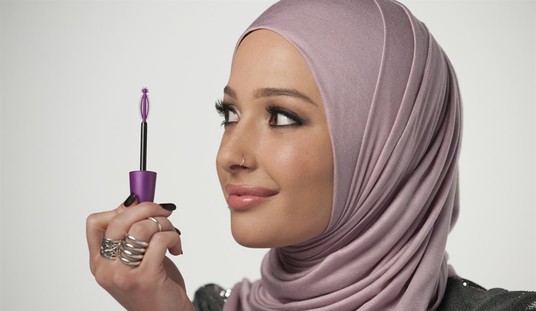
You really should applaud the bravery of the Warner Brothers marketing division, placed in charge of promoting the upcoming “Wonder Woman” movie. That is not me being snarkily sarcastic (for a change). Those people are literally in a no-win situation.
The arrival of a stand-alone Wonder Woman feature has many excited. While not the first heroine film (for example “Catwoman”, and “Elektra” are frequently forgotten, and for good reason) it is historic for a female character to have a female director, and with such a significant budget — over $100 million in production costs. However that is not an automatic cause to celebrate among the feminists. One initial response to the good news was, “What took so long?!”
Hollywood has learned the past few years that when it comes to cinematic content of a female nature they are unlikely to please the feminist audience. Examples abound of films seemingly adhering to feminist standards which become derided instead. “Jem and the Hologrrams” was a girl-power lark, but it was criticized for having a male director (gasp!). Pixar’s “Inside Out” had a majority female cast, but scorn was heaped because the character of Sadness was hatefully displayed as a corpulent female. Even an animated musical short called “Lava” was ripped apart for retrograde gender portrayals, because it featured an obese male volcano who falls in love with a lithe and beautiful female volcano (yes, seriously – volcanoes were sexist.)
In each case the rush to emotional outrage by the accuser is exposed as baseless due to not taking a breath and examining the facts.
- Why did “Jem” have a male director?! Because he was the one who fought for 5 years to get the picture into production.
- Why use fat-shaming to portray the emotion of Sadness?! Because the bulbous blue character was designed to resemble a teardrop.
- Why does “Lava” resort to unreal gender stereotypes?! Because the story was based on the very real life story of a Hawaiian musician, AND his wife.
This very same over-reactionary mindset is in play regarding the promotional efforts behind “Wonder Woman”. If you peer through social media regarding how Warners is selling their summer blockbuster you will encounter a common refrain; “Where is all the WW marketing?!” The general consensus is the studio suspects a female-driven comic movie may not perform, and therefore is afraid to spend money on an epic estrogen entry. The accusers compare WW promotions to those of recent Warner/DC films, such as “Suicide Squad”. Sexism is afoot, you see.
At Vogue Magazine they see a problem in that the “Wonder Woman” YouTube channel only sports only a dozen trailers and clips in comparison to “Suicide Squad”, which had up to thirty videos. The difference? “Suicide Squad” was a character-launch film that WB/DC will use to expand its cinematic universe. The large roster of characters in that film, intended to appear in future titles, meant there was far more content to promote.
As usual this charge of fiscal misogyny falls apart under introspection. If the studio actually harbored these fears the first reaction would be to NOT drop $100 million on the production. That thinking next extends to the marketing. With so much tied into the cost of the film it makes zero sense for a studio to then shy away and not promote a valuable summer blockbuster product. Further, the facts do not support this charge; as Vanity Fair pointed out, the promo budget for “Wonder Woman” has actually outstripped “Suicide Squad”.
Just a cursory check on things refutes charges of negligent promotions. Not only has Gal Gadot appeared on a raft of magazine covers…

… she is all but wallpapered across Times Square.

The toy line is as widespread as your average comic book epic.

Diana Prince is even splashed across the NASCAR ride driven by Danica Patrick.

I don’t know of too many comic book characters who get both their own licensed ice cream and a frozen yogurt. However, as the evidence mounts that Warners is in fact pouring out some coin, the same people carping about the lack of promotional exposure find issue with the types of promos. Behold the feminist site The Mary Sue, where they managed to swing from complaining there were not enough branded items to then being sexist for the types of products promoted.
- While I don’t want anyone to burn out on oversaturation, I do want Wonder Woman to get the blockbuster treatment. I want it to be good, and I also want it to make boatloads of money. As in, I want Gal Gadot to be able to buy an actual boat. I want nothing but Wonder Woman commercials for weeks straight because I want this movie to be thought of as just as big and important as any DC or Marvel movie.
Clearly there is a vested interest here. Then, as more examples of the typical super hero cross-promotions came out , a major issue was discovered as numerous outlets took up the war cry: “They are marketing Wonder Woman with weight-loss products?!?!” At the risk of man-splaining things, let me suggest a touch of hyperbole is at play here. As proof: they are referring to a lone product. The specific offense is the Think Thin diet health bar, and the arrival of this tie-in partnership has Mary Sue leading many bloggers in getting into a lather over this branding.
- This cross-promotion is full of the mixed messages of unrealistic standards women have forced upon them their whole lives. We’re supposed to be as strong as Wonder Woman but also expected to “think thin,” to keep our bodies small and unimposing, preferably to the point of having no body at all.
That is a passel of projection to hurl — at a snack bar. Permit me to say there is no “standard” being forwarded, you are not “supposed” to become anything specific, and you are not “expected” to do anything, merely because something is offered for sale. There is not body-shaming at play when a product is placed on a shelf with a price tag. You can choose to not engage in commerce. And in truth, there is a very sound reason for this “offensive” diet bar promotion.
Given that Wonder Woman is a female-empowerment character — something the cheerleading at Mary Sue proves to be the case — it makes sense to market the film and develop promotional partnerships towards that demographic. Promotions in sectors where women have preferential spending is actually expected. According to the market research firm Mintel:
- The snacks women do choose tend to be healthier, with 78% of their snacks purchases consisting of “healthy” snacks. While this makes men the greatest target segment for growth, women remain the most engaged consumers. As women tend to be more receptive to “health-related marketing efforts”, according to Mintel, there is opportunity in creating healthy snacks specifically formulated to meet women’s needs.
The conclusion here is feminist leaders are upset a female character is used to sell a product that females favor. There is an unspoken dichotomy at play. They hail the arrival of a character, on the sheer power that she is female, however once marketers begin targeting promotions towards females it becomes a clarion call that “sexism!” is in play. Celebrate the female character, but don’t support products that are female-centric is a confusing lesson.
This displays a rather significant blindspot. Praising the arrival of “Wonder Woman” because of her representation of females is exactly the same thing as selling Think Thin diet bars for women. The character is a product. She is packaged, commoditized, and sold for public consumption. However as both items are offered up for women only one of those is sexist — based on nothing other than it is packaged to be “for women”.
Yea, I don’t get it either.














Join the conversation as a VIP Member